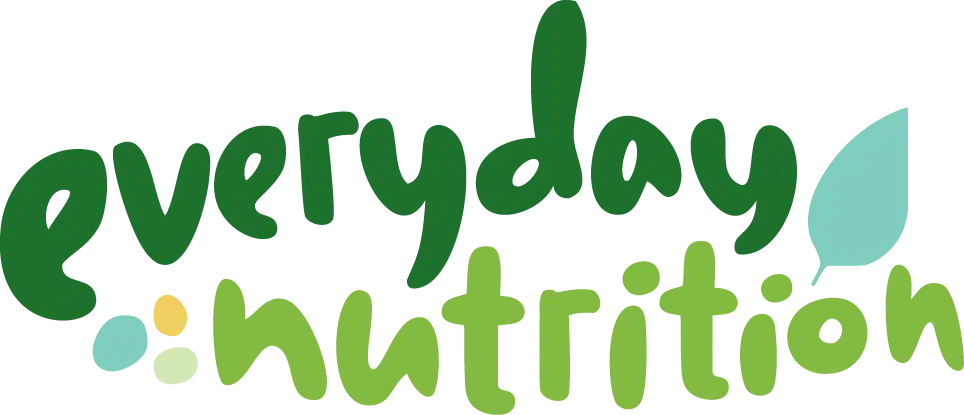What is Lactose?
Lactose is the natural sugar (carbohydrate) found in milk and milk products. It is a ‘di-saccharide’ and falls under the ‘D’ in the FODMAP equation. acronym. Being a di-saccharide, lactose is made up of two sugar molecules (glucose and galactose) that are tightly bound together. When consumed in food or drinks, the lactose travels to the small intestine where it is separated into two separate sugar molecules (glucose and galactose) by an enzyme called lactase. Once the lactose is separated into glucose and galactose, these individual sugars can easily be absorbed into the body.
What is lactose intolerance?
Lactase enzymes are key when it comes to breaking down lactose. The lactase enzyme is produced in the lining of the small bowel. How much lactase a person produces is variable form person to person and may vary during different times in a person’s life and often decrease with age.
If someone produces only small amounts of lactase, there may not be enough to break down all of the lactose a person consumes. If the lactose is not broken down into single sugars (glucose and galactose), then it cannot be absorbed in the small intestine. In this case, the lactose stays in the digestive tract and continues its path through the small intestine to the large intestine. Once in the large intestine two processes occur:
- Lactose attracts water (its osmotic) into the large intestine
- Lactose is fermented by the healthy bacteria that live in the large intestine
The combination of water and gas in the large intestine may cause watery diarrhoea, bloating and gas. These are well known symptoms that are linked to lactose intolerance.
You may be interested to know that lactose intolerance has been recognised since the late 1950’s. It was incorporated into the FODMAP acronym in the early 2000’s due to lactose being a fermentable sugar. The process that occurs to cause symptoms is the same whether the lactose intolerance is part of a FODMAP sensitivity or lactose intolerance on its own.
Important points about lactose intolerance:
- The amount of lactase enzyme varies from person to person and over the lifespan.
- People may have temporary lactose intolerance after a bout of gastroenteritis or in untreated coeliac disease.
- Your individual levels of lactase will determine how much lactose you are able to digest before you get symptoms. Most people with lactose intolerance will tolerate about 4-7g (¼ – ½ cup of milk) lactose per meal or up to 12g (1 cup of milk) of lactose spread over the day before it becomes problematic. In practical terms, this means that milk in a cup of tea or coffee may be easily digested, but a full glass or milk or a milkshake may be too much and trigger symptoms.
 Adding lactase to aid digestion:
Adding lactase to aid digestion:
Lactase enzymes can be purchased from most pharmacies in liquid or tablet form. Liquid lactase can be added to milk prior to drinking, and is often commercially added to milk to create lactose free milk. Lactase tablets can be carried with you and taken with foods or drinks that contain lactose. These are very effective and handy to carry when out and about.
NB: do check the ingredients list as some lactase enzymes contain high FODMAP sweeteners like mannitol.
Medications:
Lactose is sometimes used as a filler in medications. This is usually well below cut off for lactose intolerance and not a concern.
Lactose content of food
Lactose content of food and drinks can vary significantly. The following table specifies dairy and alternatives as high, moderate or low FODMAP. Low FODMAP options are low in lactose. You’ll note that although cheese and butter are made from milk, they do not contain any of the natural sugars, so they are naturally lactose free and well tolerated by those with lactose intolerance.
There are some people who may not tolerated dairy products for other reasons. If this is you, it is worth seeing a specialist dietitian for a 1:1 session to determine what part of the milk is bothering you.
NB: please refer to your Monash FODMAP app for serve sizes
Diet changes for lactose intolerance
Dietary management of lactose intolerance usually involves the removal of lactose on its own, or as part of the low FODMAP diet for a period of 2-6 weeks. This is then followed by a gradual reintroduction to confirm that you are in fact sensitive to lactose and to help you figure out where your threshold for lactose is.
Reintroducing lactose:
- When reintroducing lactose you want to make sure that your tummy is calm and well settled before you start.
- Keep your baseline diet the same and do not make major changes during the reintroduction. This way you can be sure that if you experience symptoms they are related to lactose.
- Begin with a small amount of lactose and increase the serve size over 3 days
If you experience symptoms: You have identified your personal threshold for lactose and you can stop the reintroduction. Remove the lactose containing food from your diet and allow symptoms to settle. Once you are feeling well for 3-4 days, you can continue with your reintroduction process. If you are not reintroducing any other foods, you can then manage your lactose intolerance by reintroducing lactose containing foods up to the amount you tolerated.
If you do not experience symptoms: You can consider the reintroduction successful and assume that you are not lactose intolerant. If you have more reintroductions to do, remove the lactose from your diet until you have finished remaining reintroductions. If you have no more reintroductions, there is no reason to continue to limit lactose containing foods form your diet.
Note: Lactose intolerance can change over a person life span, so your tolerance may vary. This means you may want to come back and retry a lactose reintroduction every 6-12 months to assess your tolerance.
Reintroduction schedule:
Each reintroduction is completed over 3- 6 days. This is because reintroductions can be done on consecutive days or alternating days. If you have to stop a reintroduction for another reason, you can do so and then just pick up where you left off when you are ready to resume the reintroduction.
Test dose 1: ¼ cup cow’s milk
Test dose 2: ½ cup cow’s milk
Test dose 3: 1 cup cow’s milk
Test dose 4: A larger serve of cow’s milk if desired
Berry Banana Smoothie

Ingredients:
- ½ frozen firm banana
- ½ cup frozen strawberries
- ¼ cup frozen blueberries
- 1 tsp maple syrup
- ¼ tsp cinnamon
- ½ tsp vanilla extract
Test dose 1: use 1/4 cup cow’s milk & 3/4 cup almond milk
Test dose 2: Use 1/2 cup cow’s & 1/2 cup almond milk
Test dose 3: use 1 cup cow’s milk
NB: milk can be skim, light or full cream
Method:
- Select the test dose ingredients that are suitable for you.
- Place all ingredients in a blender and whizz until smooth
Final thoughts:
Lactose intolerance can be uncomfortable, but it can be easily managed through diet. Fortunately, lactose free products are now widely available so there is no need to completely remove dairy products from your diet. In most cases, even people who are lactose intolerant will tolerate small serves of lactose, and finding your individual tolerance is the best way to maximise food options and minimise symptoms.


 Adding lactase to aid digestion:
Adding lactase to aid digestion:







